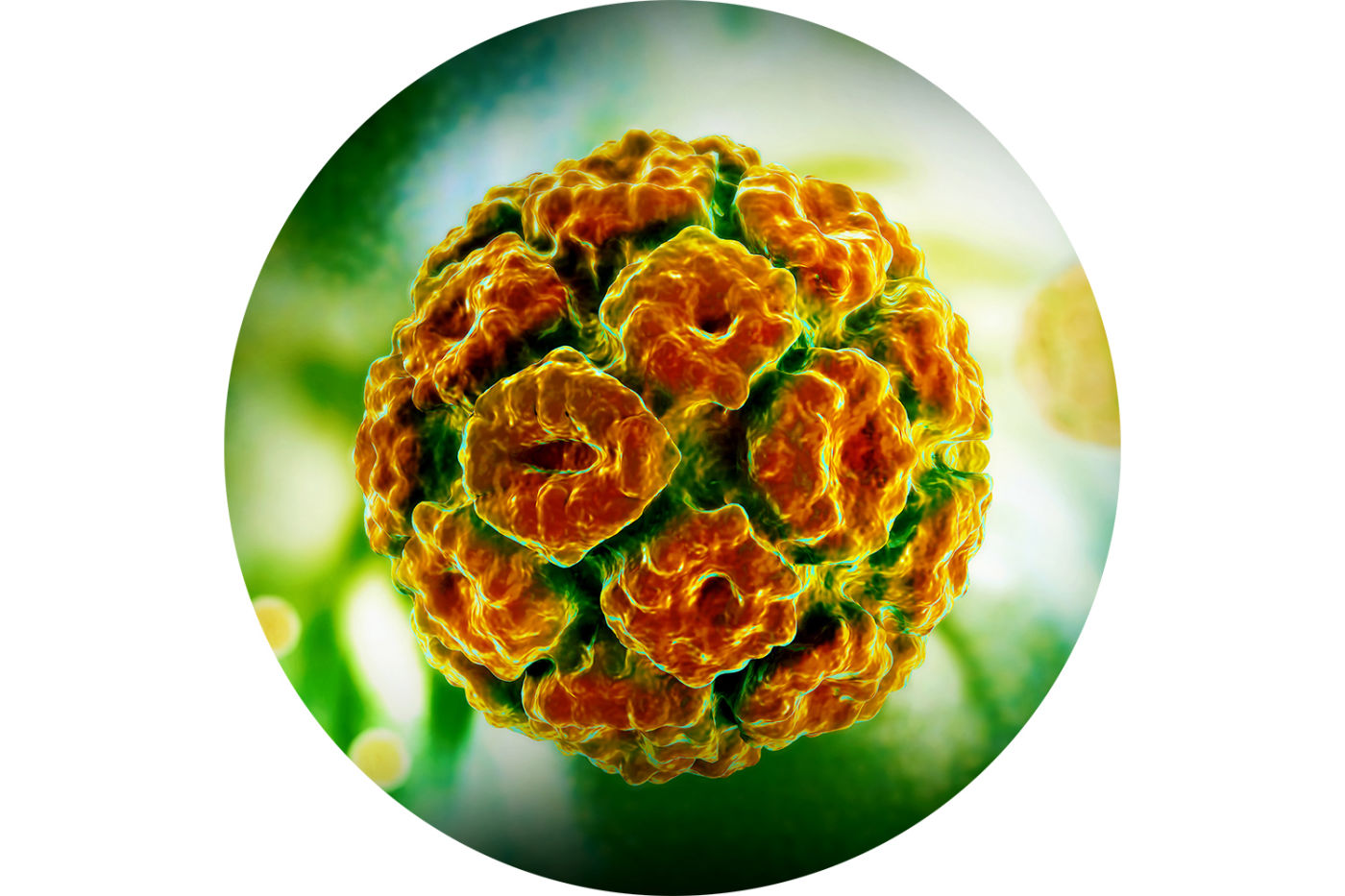
(RIF. DNA 05)
It belongs to the Papilloma viridae family and affects only humans. It is at the origin of various infections that are transmitted mainly through sexual intercourse. Papillomavirus infection (HPV - Human Papilloma Virus) is by far the most frequent sexually transmitted infection; the absence of symptoms favors its spread since most affected individuals are unaware of the ongoing infectious process.
HPV infection is more frequent in the female population. There are about 100 types of papillomavirus differentiated by genome. Some are responsible for benign lesions such as warts (type 6 and 11 species), others are capable of producing pre-invasive (dysplastic) and invasive lesions, i.e. cancer of the uterine cervix (types 16 and 18). Generally the time that elapses between the infection and the onset of precancerous lesions is about 5 years, while the latency for the onset of cervical carcinoma can be of decades. Cervical cancer (cervix) was the first tumor to be recognized by the World Health Organization as totally attributable to an infection: it is in fact caused in 95% of cases by a genital HPV infection.
In Italy about 3,500 new cases of cervical cancer are diagnosed every year and over 1,500 women die from this cancer. For this reason it is important to put in place preventive measures, based on screening programs, which allow to identify precancerous lesions and to intervene before they develop into carcinoma.
It can be at the origin of cervical cancer and is also implicated in other tumors of the mucous membranes. Fortunately, Papilloma virus infection can be reversed through a vaccine.